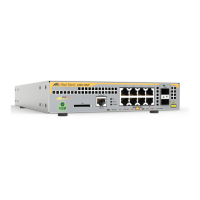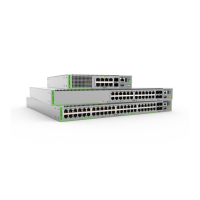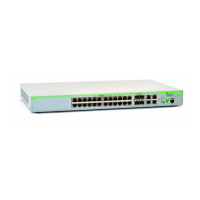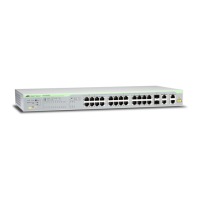C613-50100-01 REV C Command Reference for x930 Series 646
AlliedWare Plus™ Operating System - Version 5.4.6-1.x
LINK AGGREGATION COMMANDS
PLATFORM
LOAD-BALANCING
platform load-balancing
Overview This command selects which address fields are used as inputs into the load
balancing algorithm for aggregated links. The output from this algorithm is used
to select which individual path a given packet will traverse within an aggregated
link.
The no variant of this command turns off the specified inputs.
Syntax
platform load-balancing [src-dst-mac] [src-dst-ip]
[src-dest-port] [ethertype]
no platform load-balancing [src-dst-mac] [src-dst-ip]
[src-dest-port] [ethertype]
Default By default, all load-balancing input options are used.
Mode Global configuration
Usage By default, all load-balancing input options are turned on. Therefore, to use a
different set of inputs, you must turn off the inputs you do not want.
Useful combinations of inputs include:
• all four inputs
• MAC address, IP address and Layer 4 port number
• MAC address and Ethertype
•MAC address only
• IP address and Layer 4 port number
• IP address only
The following examples show how to configure some of these combinations.
Use the show platform command to verify this command’s setting.
Parameter Description
src-dst-mac Include the source and destination MAC addresses (Layer 2)
src-dst-ip Include the source and destination IP addresses (Layer 3).
If you choose this option, the algorithm will use MAC addresses
to calculate load balancing for Layer 2 and non-IP packets.
src-dst-port The source and destination TCP/UDP port data (Layer 4). If you
include this option, make sure that src-dst-ip is also selected.
ethertype A two-octet field in an Ethernet frame that shows which protocol
is encapsulated in the payload of the Ethernet frame. Ethertype
is the same for all IP traffic, but is different for different kinds of
non-IP traffic.

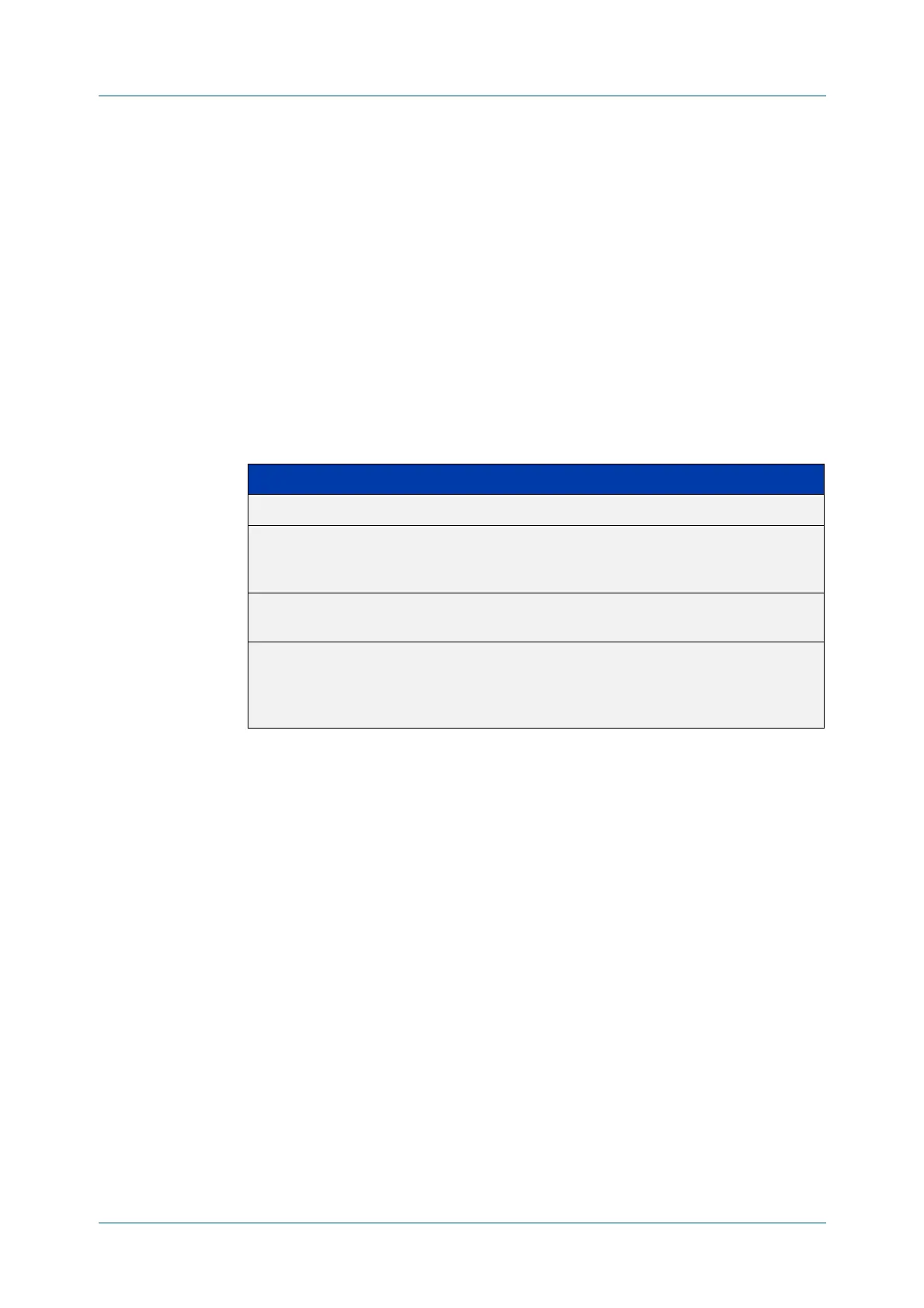